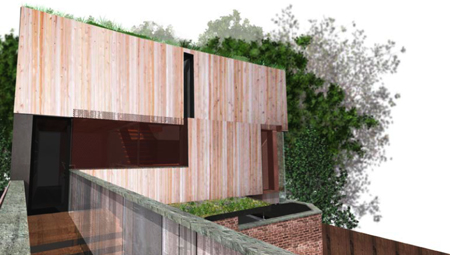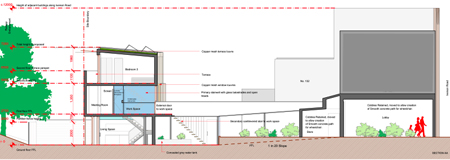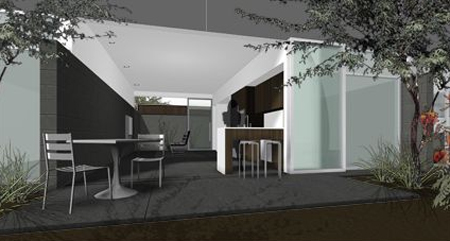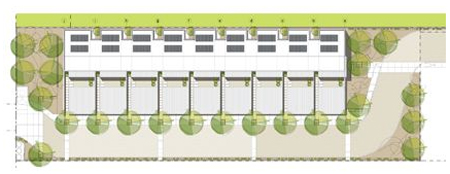
Located in North London on a site flanked by a railway embankment, the Keyhole House is a 3 storey ‘eco friendly’ single family project by the Crawford Partnership.
The house is accessed by a narrow ‘undercroft’ passage – not much more than an alley – between two neighboring houses, which creates an interesting entry into the project. Due to the site constraints, the house occupies the entire available plot – and creates an internal covered access ‘gallery’, which is top lit, that leads to the main house from the street.

From the street the house has almost no presence – simply a new doorway between existing homes. upon entering into the site, and the ‘access gallery’, one approaches a distinctly modern structure – open plan at ground floor, with full height continuous windows along the tree lines railway embankment, which provides natural shading to the home.
As previously mentioned, the project is ‘eco friendly’ – designed with triple glazed windows with external copper mesh shutters to balance solar gain, a green roof & grey water recycling system, a ground source heat pump system along with some solar hot water heating, and photovoltaic panels to generate a portion of the projects electricity.

Crawford Partnership is a small [10 people] firm in the London, founded by Alan Crawford in 1995.
‘Our projects are driven by a clear and concise design philosophy that is concerned with maximising opportunities to create interesting spaces and forms that combine dramatic use of materials and light, and address issues of sustainability and energy efficiency.’ – Alan Crawford, 2007 [from homepage].

::project via MoCo Loco::
::info and images from the crawford partnership::



















